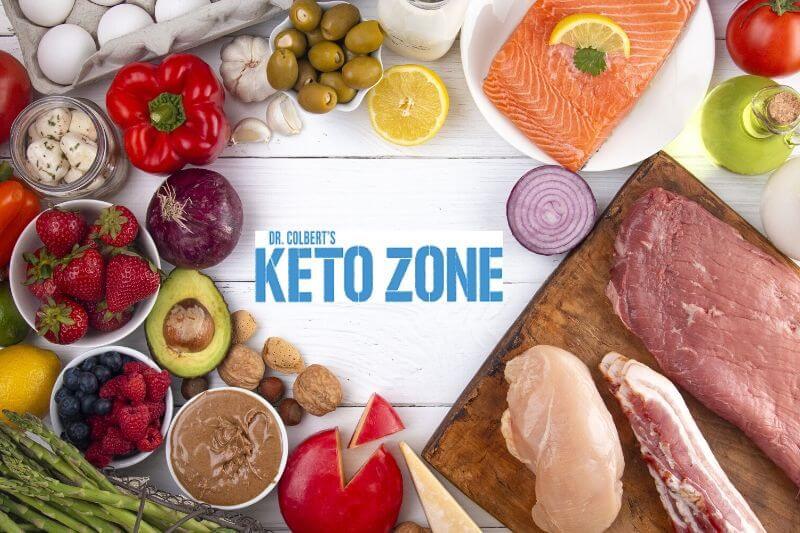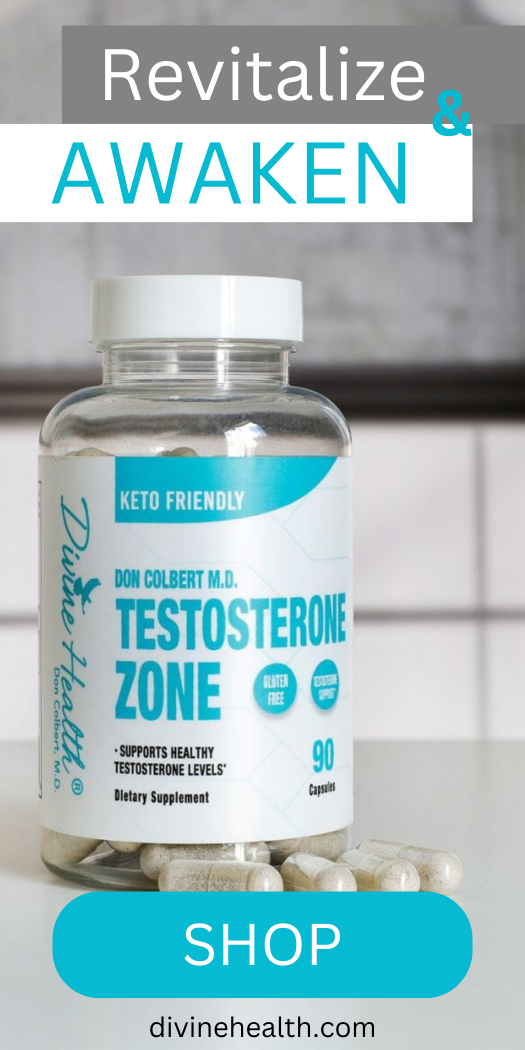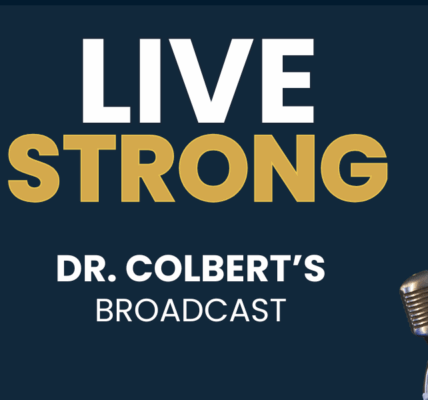Are you ready to transform your life, meet your weight goals, and improve your health? Are you ready to enter the Keto Zone?
It’s not hard. In fact, you can start with the Keto Zone Quick Guide today.
And, there’s no doubt: when you enter the Keto Zone, you will lose fat (1, 2) and improve your health (3, 4).
All it takes is 5 easy steps.
You can do it. Enter the Keto Zone today.
What is the Keto Zone?
The Keto Zone is a lifestyle and eating plan that allows your body to burn beneficial ketones as fuel rather than sugar.
Sugar has a lot of downsides. Not only is it extremely detrimental to health, associated with diabetes, inflammation, and many chronic diseases, it is also not a great energy source.
Sugar means ups and downs. It means fat store.
Ketones are steady energy, and fat loss.
And, you can get into the Keto Zone in just 24-48 hours.
Step #1: Enter the Keto Zone: Omit Carbohydrate Foods, Add Exogenous Ketones and Increase Fats
In order to enter the Keto Zone and get into ketosis, and utilize ketones for energy, brain fuel, and more, you’ve got to restrict your carbohydrates.
Carbohydrates are found in many foods. These include:
- Grains –wheat, bread, pasta, rice, oats, cereal, corn, etc. and all product made with them.
- Sugar –table sugar, candy, pastries, cakes, ice cream, chocolate, soda, juice, honey, maple syrup, etc. Yes, even natural sweeteners like honey and maple have sugar.
- Starchy vegetables –potatoes, sweet potatoes, corn on the cob, peas, winter squash, parsnips, etc.
- Legumes –beans, lentils, chickpeas, etc. Actually, peanuts are a legume, but they are low-carb. They can be eaten in small amounts.
- Most fruits – omit bananas, pineapple, oranges, apples, grapes, mangos, peaches, etc. The exception, as you’ll see below is a small number of berries. Don’t worry! All the benefits of fruits are also found in vegetables!
- Low-fat dairy & milk – low-fat milk and low-fat cheeses have extra carbs. You can eat some plain yogurt, heavy cream, regular-fat cheese, and grass-fed butter.
- Processed Foods – Anything that comes in a package, read the label. Ignore the front-side advertising and claims, and read the nutrition label to find the carbs. For example, if you read the label of low-carb bread, you may find it still has 8 grams carbs per serving. Always read the label.
Next, for the quickest and most effective transformation into ketosis, ADD EXOGENOUS KETONES (INSTANT KETONES). These are ketones, just like what your body makes, attached to salts in a powder form. Add them throughout the day to enter the Keto Zone faster, and avoid “keto flu.” See more below.
Third, what should you eat in place of carbs? Fats!
At meals, have fats and a small number of vegetables and proteins instead. The fats you can use are:
- MCT Oil Powder (in place of milk or processed creamer)
- Grass-fed butter on eggs and other proteins
- Avocados
- Nuts (keep to just ¼ cup per serving)
- Olive oil, coconut oil, and avocado oils
In fact, as you progress, you’ll want to increase your fat intake to 75% of your calories. This means around 120-150 grams of fat per day for most people.
Step #2: Refine Your Macronutrients to Get into the Keto Zone
Using the lists above, you’re going to vastly reduce carbs (basically removing all “carb foods”) and eat healthy fats, proteins, and vegetables. As you progress, you’ll also learn to add much more variety and recipes that use zero-carb natural sweeteners, nut flours, and more.
But, first, focus on getting the carbs down.
How low?
Just 20 grams net carbs to start.
Net carbs are the total grams carbs in a food minus the grams of fiber.
Total grams carbs – grams fiber = grams net carbs
While this may sound difficult, you’re already avoiding carbohydrate foods, so there will be only a few numbers to calculate. Here’s a quick guide to the other foods, and how many net carbs are in each. We’ll use these to build meals:
- Pure fats like oils, butter, MCT Oil Powder = 0 grams net carbs.
- Pure proteins like eggs, meats, fish, and more = 0-2 grams net carbs.
- Nuts = ~2 grams net carb per ¼ cup serving.
- Low-carb vegetables like salad veggies and greens like arugula, lettuce, bell peppers, broccoli, green beans and more typically = 2-3 grams net carbs per 1 cup fresh or ½ cup cooked.
- Avocados = 2 grams net carbs per ½ medium avocado.
- Berries = ~3-4 grams net carbs per ¼ cup – so this is just a small amount.
- Processed foods vary, so always check the label for total carbs and subtract out the fiber.
On the other hand, there are foods you’ll proactively want to add:
Healthy fats. It’s important to fill your diet with fats like MCT oil and MCT Oil Powder, avocados, small amounts of nuts, olive oil and more.
Again, 75% of calories from fats is well over 120 grams for most people. It’s much easier than it sounds. Consider the fat content of the following healthy fats:
- 1 tablespoon of healthy oil like olive, avocado, MCT or coconut = 14 grams of fat
- MCT Oil Powder = 8 grams of fat
- ½ avocado = 15 grams of fat
- A ¼ cup of nuts like pecans = 20 grams of fat
- most “fat bomb” recipes = 20 or more grams of fat
Step #3: Get into the Keto Zone with Ketosis in 24-48 Hours
During the initial 24-48 hours of going this low carb, you may feel “off.” You may experience some fatigue or even achiness and flu-like symptoms. It’s a big deal to completely change the way your body utilizes food! But, it’s not inevitable.
Avoid the Keto Flu:
Again, you can make it much easier on yourself and avoid the Keto Flu.
First, make sure you are still eating enough. Don’t just starve yourself. Proactively eat plenty of fats, and moderate amounts of protein and vegetables.
Next, take a few servings of EXOGENOUS KETONES per day. These ketones, which are similar to the ones your own body makes, are consumed through the diet and help you get into ketosis much quicker and without flu-like symptoms.
Consider also drinking 2-3 cups of organic or natural bullion broth (or bone broth) per day during the first several days of getting into ketosis. The high sodium content alleviates many of the symptoms.
Once your body is burning ketones for fuel, you will feel good again and are right on track to make ketones your body’s main fuel source!
Step #4: Build Keto Zone Daily Meals
Now that you know which foods to avoid, and which to add, get into the Keto Zone with your meals. Keto Zone meals look like:
- Coffee with MCT Oil Powder and optionally, heavy cream
- Eggs with avocados, sauteed onions, and garlic, drizzled with 2 Tbsp olive oil or pesto.
- Smoked salmon with cream cheese and green leafy vegetables with a drizzle of olive oil
- Tuna salad made with tuna and keto mayo or avocado mayo, wrapped in large leafy greens
- Grilled chicken, pork chops, fish, etc. with grass-fed butter and fresh herbs alongside a salad with olive oil, apple cider vinegar, salt and pepper
- Meat and vegetable stir-fries with coconut oil and cauliflower rice
- Breakfast recipes like Keto Zone Waffles and Breakfast Favorites
- Lunch recipes like Keto Zone Avocado Mayo Salads
- Dinner Recipes like Keto Zone Asian Lettuce Wraps & Steps to Make Keto Zone Dinners
Snack ideas include:
- Cheese
- ¼ cup nuts
- Celery sticks with cream cheese or nut butter
- ½ avocado with salt
- ½ cup plain Greek yogurt with ¼ cup berries
- Fat bombs like Keto Zone Coconut Fat Bombs
- Dessert recipes like Keto Zone Chocolate Brownies
Step #5: IMPORTANT: Get Your Comprehensive Guide to Get Into the Keto Zone and Stay There
This is a quick start.
But, to get the most out of Keto Zone, obtain your weight and health goals, and make it a lifestyle for your life, it is strongly recommended to get the best, comprehensive guide to Keto Zone by Dr. Colbert. Buy and join:
-
Keto Zone Starter Kit: Includes Dr. Colbert’s Keto Zoe Diet Book (Comprehensive Guide), Instant Ketones, MCT Oil Powder, Ketosis Test Strips & More!
-
And join, for absolutely free, the 21 Day Keto Zone Challenge (click tab at the left of screen)
Advanced Keto Topics
As you continue in your Keto Zone lifestyle, you will also learn to:
- Use intermittent fasting
- Avoid processed, inflammatory foods
- Eat Keto Zone at restaurants
- Avoid hidden carbs
- Enjoy parties and get-togethers on Keto Zone
- Utilize nut flours and zero-carb natural sweeteners
Bottom Line
If you are ready to change your life, get into the Keto Zone! You can start with this Keto Zone quick guide while you wait for your Keto Zone Starter Kit to arrive. Then, join the challenge and obtain your goals. You can do it!










I am exclusively breast-feeding my four-month-old, and after much research (I’ve done programs like trim healthy mama for the past several years), I’ve learned that keto could be the way to go while nursing my baby to lose some of the baby weight. I just want to make sure that I’m taking in enough carbs; most research says minimum 50 net carbs per day for breast-feeding moms. Is that correct? Milk supply is great right now. Is there anything I should know/be aware of as a nursing mom? Thank you and have a blessed day!